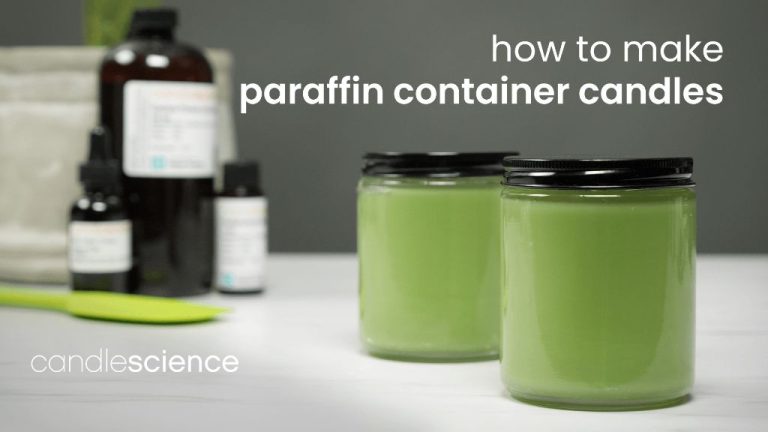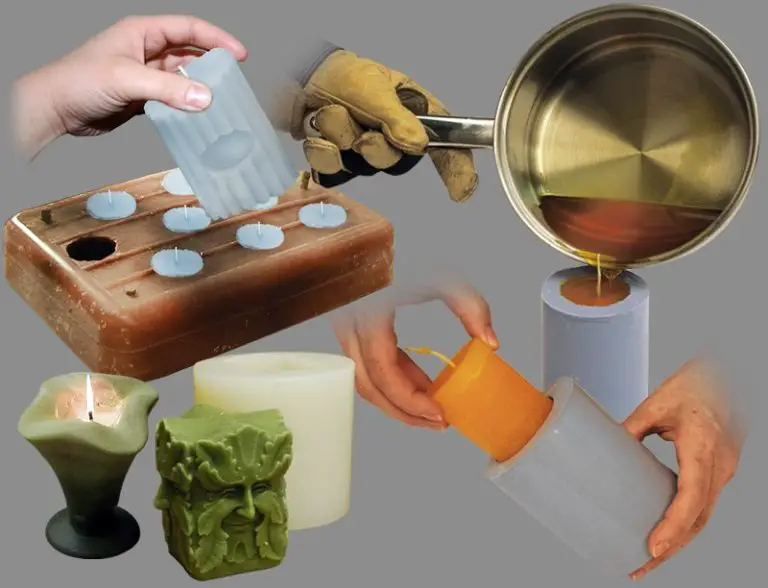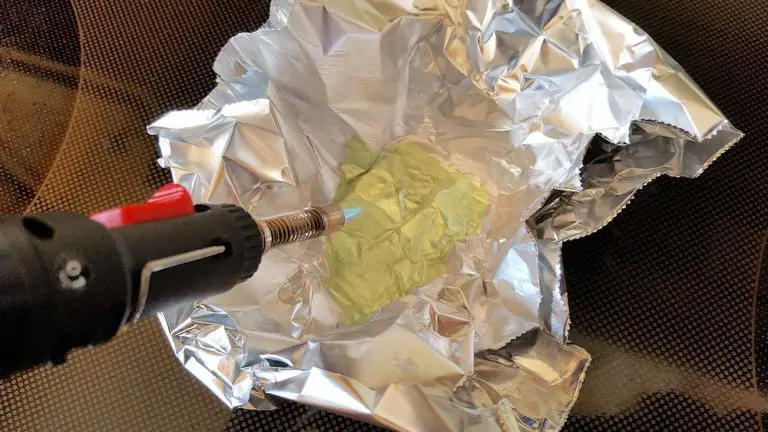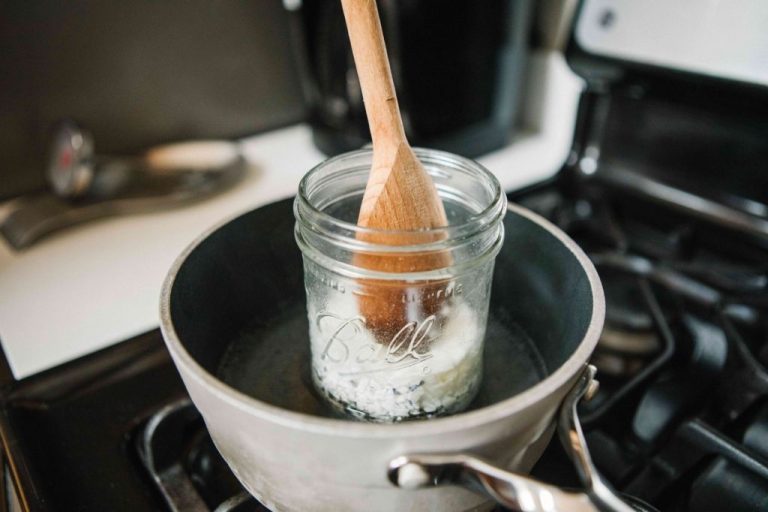How Much Soy Wax Flakes To Make A Candle?
Making candles with soy wax flakes is a popular hobby and small business. Knowing how much soy wax to use for different candle sizes is important for both beginners and experienced candle makers. This article provides readers with the key information needed to determine soy wax amounts when making candles of various diameters and heights.
The goal is to give candle makers the knowledge to calculate the right quantity of soy wax flakes they need. With this information, crafters will avoid wasting materials from using too much wax or having candles turn out too small from not having enough wax. Additionally, properly measuring soy wax leads to even burn, good scent throw, and attractive candles.
Factors That Determine Soy Wax Amount
The amount of soy wax flakes needed to make a candle depends on several key factors:
One of the most important is the candle dimensions, including the diameter and height of the candle container. A wider container diameter means more wax is needed to fill it. Similarly, a taller candle height requires more wax. Standard candle containers range from small 4 oz tins to large 24 oz pillars, which can hold over 550 grams of wax.
Another factor is the wick size. Larger diameter wicks designed for bigger candles need more wax volume to burn properly. The wick must be submerged in enough wax to absorb and release the fuel for an even burn.
The material of the candle container also impacts wax needs. Glass and metal containers conduct heat better than ceramic or tin, affecting wax pool melts. More wax may be required for certain materials to account for additional melt loss against the sides.
Recommended Soy Wax Amounts
When making candles, it’s important to use the right amount of soy wax for each candle size. Here are some general guidelines for how much soy wax flakes to use based on the candle diameter:
- For a 4 oz candle, use 3-4 oz of soy wax flakes
- For a 6 oz candle, use 5-6 oz of soy wax flakes
- For an 8 oz candle, use 7-8 oz of soy wax flakes
- For a 10 oz candle, use 9-11 oz of soy wax flakes
- For a 12 oz candle, use 11-13 oz of soy wax flakes
More specific soy wax amounts can be found in this handy reference chart from Life N Reflection:
| Candle Size | Wax Needed |
|---|---|
| 4 oz | 3-4 oz |
| 6 oz | 5-6 oz |
| 8 oz | 7-8 oz |
| 10 oz | 9-10 oz |
| 12 oz | 11-12 oz |
Following these soy wax amount guidelines will help ensure you have enough wax to create nicely filled candles in each size.
Calculating Exact Amounts
To calculate the exact amount of soy wax flakes needed for candles, there are a few simple formulas you can use:

Fill the candle container with water to the desired fill level. Weigh the water and record the weight in grams. For example, if the water weighs 200g, that’s how much wax you’ll need for that container. According to Cierra Candles, the wax amount is typically around 86% of the water weight. So you would multiply the water weight by 0.86. In this example, 200g water x 0.86 = 172g wax.
Another method is to calculate the volume of the container. Measure the height and diameter and use a formula to determine the volume in cubic inches or centimeters. Then multiply this volume by the density of soy wax, which is around 0.9g/cm3 or 0.5oz/in3. This will give you the wax weight needed to fill the container.
For example, if your container is 3 inches in diameter and 3 inches tall (height), the volume would be 14.1 cubic inches (πr2h). Multiply by 0.5 oz/in3 for wax density:
14.1 in3 x 0.5 oz/in3 = 7.1 oz wax needed.
Always add a little extra wax, around 5-10%, to account for wax that adheres to pouring equipment. Testing your calculations with water first is recommended to confirm the fill levels.
Extra Soy Wax Allowances
It’s common practice to add extra soy wax flakes to your initial candle making calculations to account for loss during pouring and cooling. This is because soy wax can shrink anywhere from 1-3% as it cools and solidifies in the container [1]. The wax shrinkage happens because soy wax expands slightly when heated into a liquid state, then contracts again when reverting back to a solid form.
To offset this shrinkage, most candle makers recommend adding an extra 10% over the calculated wax amount. So if your formula requires 500g of soy wax, you would multiply that by 1.1 to get 550g. This provides a buffer so that after cooling and shrinking, you’ll still have the full 500g of wax filling the container.
Some makers prefer to use an extra 5% instead, which provides less of a buffer but still accommodates for a small amount of shrinkage. In general, adding anywhere from 5-15% extra soy wax is sufficient to account for pouring and cooling variances.
You may need to experiment to find the ideal extra wax percentage for your specific candle making process and wax type. But adding a small surplus is a useful best practice when calculating how much soy wax is required.
Soy Wax Flakes vs. Pellets
When it comes to soy wax for candle making, you can choose between soy wax flakes or soy wax pellets. Both have their advantages and disadvantages in terms of measuring, melting, and moisture control.
Soy wax flakes are thin, flat pieces that are chopped from larger soy wax slabs. The flakes stack and compact well for shipping and storage, but can be messy to measure and melt compared to beads. Flakes have more exposed surface area, so they tend to absorb more moisture from the air over time. This can lead to issues like sweating and frosting on finished candles if the extra moisture isn’t properly accounted for.
Soy wax pellets, also called beads, are formed by extruding melted soy wax through small holes to create BB-sized pellets. The uniform shape and size make beads much easier to precisely measure by volume or weight. Beads melt faster and more evenly than flakes since their shape exposes less surface area. The smooth rounded shape also means beads resist moisture absorption better than jagged flakes.
Overall, soy wax pellets offer better control and reliability for measuring out wax when making candles. Their moisture resistance also helps prevent issues like frosting. However, flakes can be slightly more affordable upfront if buying in bulk slabs. For hobbyists and small businesses, the benefits of beads generally outweigh the small savings on bulk flakes.
Soy Wax Suppliers
When looking to purchase soy wax flakes, here are some of the top suppliers to consider:
- CandleScience – One of the most popular candle making suppliers, CandleScience offers natural soy wax flakes in a variety of sizes including 1 lb, 10 lb, 25 lb, and 55 lb. They have both organic and non-organic soy wax options.
- Lone Star Candle Supply – Carries Golden natural soy wax flakes in 1 lb to 55 lb quantities. You can buy through their website or visit their Texas store.
- Candlewic – Sells Golden Foods brand soy wax flakes in sizes ranging from 1 lb sample packs to 55 lb bulk boxes. They offer next day shipping.
- The Flaming Candle – Offers Soya Technologies natural soy wax flakes from 2 lbs up to a 55 lb case. You can shop online or at their store in Washington state.
- Bulk Apothecary – Carries a wide range of soy wax flakes from 5 lbs to 55 lbs from brands like NatureWax and Cargill. Pricing is competitive when buying bulk quantities.
Whether you need a small amount of soy wax flakes for testing recipes or want to purchase bulk quantities for large-scale production, one of these vendors should meet your needs. They all offer high-quality soy waxes and convenient online ordering. Compare options to find the soy wax products, quantities, and pricing that work best for your candle making needs.
Soy Wax Storage
Proper storage is important for maintaining the quality and performance of soy wax flakes. According to Suffolk Candles, soy wax should be stored in a cool, dark place away from heat and light which can cause the wax to sweat and lose its opacity. The ideal storage temperature is between 10-20°C (50-68°F).
Many candle makers recommend storing soy wax flakes in a tightly sealed container like a plastic bucket or drum. CandleScience suggests using food grade plastic buckets with a gamma seal lid to keep wax clean and dry. The container should be opaque to block light. Oxygen absorbers can be added to prevent wax from oxidizing over long term storage.
While some people freeze soy wax, this is not necessary if stored properly at room temperature. Freezing can cause condensation inside containers when thawing which promotes mold growth. Wax may also become brittle when frozen. Allow frozen wax to fully reach room temperature before use.
When stored properly in a cool, dark place, soy wax flakes can last 6 months to 1 year before quality degradation occurs. Check old wax for proper melt point, color, scent throw, and texture before use.
Troubleshooting Soy Wax
If you experience issues with your soy wax candles, there are some troubleshooting steps you can take:
Soft or Clumping Wax: If your soy wax becomes soft or clumps together, it may have been exposed to excessive heat, moisture, or has a high oil content. Try storing your soy wax properly by keeping it cool, dry, and sealed. You can also add a small amount of vybar or parasoy to increase the hardness.
Air Bubbles: Air bubbles can occur if the wax is overheated or cooled too quickly. Heat the wax slower next time, and cool it down gradually after pouring into the candle vessel. You can also try tapping the vessel on a hard surface to release bubbles.
Scent Fading: Some essential oils don’t hold up well in soy wax. Use scent oils specifically formulated for soy, or add an anchoring agent like benzoin powder to help retain fragrance.
Wax Separation: If your wax separates with oil on top, try using less fragrance oil, heating the wax slower, and cooling slower after pouring. Fully incorporating additives can also prevent separation.
Frosting: Frosting happens when wax crystallizes on the surface as it cools. Avoid drafts while pouring and cooling candles. Warming vessels before pouring, and adding vybar can also minimize frosting.
Tunnelling: Tunnelling is caused by an oversized wick that burns too quickly. Use a smaller wick appropriate for your vessel’s diameter. Properly heating and cooling wax will also improve burn pool consistency.
Conclusion
In summary, the amount of soy wax flakes needed to make a candle depends on the container size, desired burn time, wax density, and personal preferences. As a general guide, use 1 ounce of wax per hour of desired burn time for containers up to 3 inches wide. Allow for extra wax beyond burn time calculations to account for full container pools and testing. Consider wax density and fragrance oil amounts too. Store soy wax properly to avoid issues. Making your own candles with soy wax flakes allows full customization for your needs. With some simple calculations and testing, you can create soy candles with your preferred scent and burn time.
The key takeaways are:
- Use 1 oz wax per hour of burn time for small containers
- Allow extra wax beyond burn time estimates
- Factor in wax density and fragrance oils
- Store soy wax away from heat and humidity
- Customize candles using wax amount calculations





